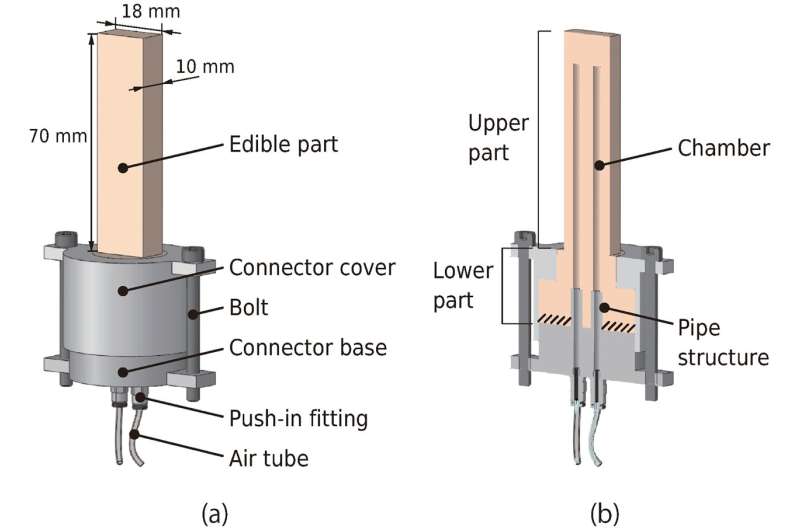This article has been reviewed according to Science X's editorial process and policies. Editors have highlighted the following attributes while ensuring the content's credibility:
fact-checked
proofread
Exploring the eating experience of a pneumatically-driven edible robot: Perception, taste, and texture

In a landmark study, Associate Professor Yoshihiro Nakata of the University of Electro-Communications, Japan, in collaboration with researchers from Osaka University, conducted research on edible robotics. Published in PLOS ONE, this study is the first to explore the experience of consuming a moving edible robot.
Drawing inspiration from traditional Japanese culinary practices like Odorigui, which involves eating live seafood, this research extends these cultural concepts into the domain of robotics. The team developed a pneumatically-driven robot made of gelatin and sugar, focusing on creating an experience that merges the animate with the edible, reminiscent of the dynamism found in Odorigui.
The study comprised two experiments. The first experiment assessed participants' impressions based solely on observing the robot's movements without eating. This phase provided valuable insights into how the perceived animateness of the robot impacts the hypothetical eating experience.
In the second experiment, each participant experienced both conditions: eating the robot while it was in motion and when it was stationary. This within-subject comparison revealed that perception (Intelligence, emotion, animateness, guilt, and freshness) was notably more intense when the robot was in motion. The texture experienced while biting and chewing the animated robot differed from the stationary condition.
In pioneering the field of Human-Edible Robot Interaction (HERI), which is a novel concept of studying interactions between humans and edible robots, this study represents a significant stride in understanding how people interact with and perceive edible, moving robots.
By creating a controlled environment to examine human psychology in the context of consuming these robots, the research offers novel insights into the immediate psychological and cognitive effects of such interactions. Furthermore, the exploration of HERI extends beyond psychological and cognitive responses.
It delves into ethical, societal, and philosophical considerations of consuming edible robots and the act of eating, thereby broadening our understanding of the complex interplay between technology, food ethics, and human values. In addition, this pioneering research opens new possibilities in the intersection of culinary arts and robotics, suggesting innovative applications in gastronomy and medical fields.
More information: Yoshihiro Nakata et al, Exploring the eating experience of a pneumatically-driven edible robot: Perception, taste, and texture, PLOS ONE (2024). DOI: 10.1371/journal.pone.0296697



















